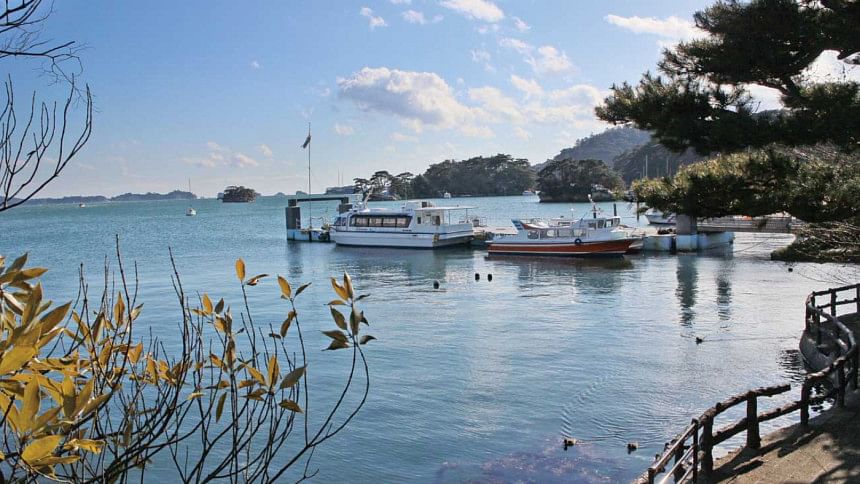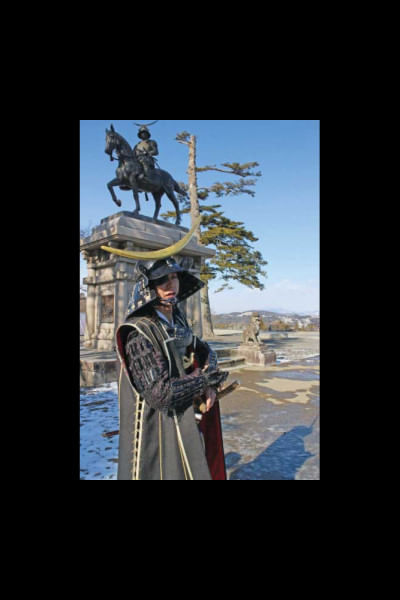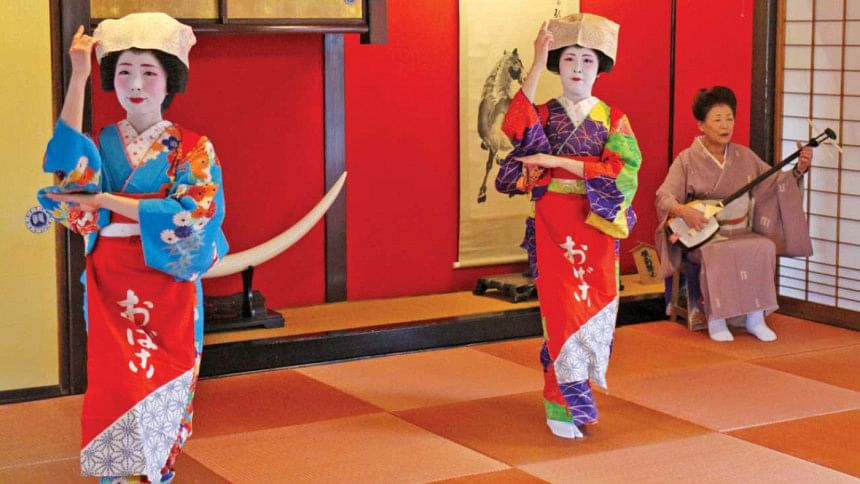WHERE JAPAN'S

On arrival in Tokyo's Haneda airport, we were met by our guide Toshihiro Kamba who gave us a quick history lesson on the region before we set off for Sakata City in Yamagata, the first stop on a trip that would see us traverse Japan and get a glimpse of the country's east and west coasts.
As we made our way to Sakata, Kamba explained that the region was once an important rice production area, supplying up to 25 percent of the rice used in Japan, and Sakata, as a port city, was the main gateway for traders.
Sadly, much of the city's historic architectural wonders were lost in the 1894 Shonai earthquake and subsequent fires. However, the Sankyo warehouses, our first stop on the trip, survived the fire due to its location.

Built more than 200 years ago, the warehouses use design techniques and landscaping that help them stay cool in the summer and warm in the winter. This proved to be so effective that nine of the 12 surviving warehouses are still in use today, with the remaining three open to tourists.
According to Kamba, the warehouses might be a familiar sight to Japanese TV drama fans as they were among the backdrop used for the highly successful series Oshin, which was a hit in Malaysia, Bangladesh and other Asian countries.
As a port city, Sakata also maintained close ties with the capital and is one of the few places where geisha are still trained. Somaro teahouse, which is also over 200 years old, is the place to visit to see the maiko (trainee geisha) perform and what a treat it was.
After the performance, we were taken on a tour of the teahouse and discovered that it had survived the 1894 conflagration due to its thick walls. In one of the rooms, we had a close look at antique Hina dolls, which are used during the Hinamatsuri, or Girls Day, celebrations on March 3 each year.
Rice is still a major product in Sakata, and is the key to another of Sakata's famed products saké. At the Hatsumago Brewery deputy manager Masaki Sato explained the various steps involved in producing saké and the importance of good rice and water.
Of course, my favourite part was tasting the brews, which Sato said were also exported as far away as the United States and Singapore. Good saké goes down like a breeze and Hatsumago's saké did not disappoint.
It had been snowing throughout our visit, and the next day saw us heading to an area that could only be called a winter wonderland—Mount Zao. Zao Onsen is a resort town popular for its ski slopes and hot springs.
This quaint little town felt a bit surreal as the combination of snow, freezing temperatures and hot springs left the streets swathed in swirling clouds of mist, with a hint of sulphur in the air.
Kamba explained that Zao was also home to "snow monsters" which are actually evergreen trees covered in a thick coat of snow, causing them to bend and create weird and wonderful shapes. Our first attempt to see the ice monsters met with failure as the winds were blowing too hard.

However, after the sun set, we were given the chance to ride up the mountain in snow ploughs to get a closer look at the snow formations. With temperatures hovering around -15 degree C, we hopped out of the snow ploughs and soon forgot about the extreme cold as we got a closer look at the ice monsters.
Later, I decided the best way to warm up was to visit an open-air onsen (hot spring) for a long soak in the mineral-rich waters. Many Japanese swear by the supposed health-giving properties of their hot springs but visitors may need to get over being self-conscious as clothes, and even towels, are not allowed in the pools.
Seafood galore
The next day, we went over the mountains and headed for the port city of Shiogama, on the east coast of Japan, which reputedly has the highest density of sushi restaurants in Japan.
The Shiogama Seafood Wholesale Market is a major attraction here. Not only is it the place to pick up some really fresh seafood, it is also the perfect spot to enjoy a hearty meal. Steaming hot rice and miso soup are available at the back of the market, and the traders are more than happy to slice the seafood into bite-size pieces so that it can be enjoyed fresh.
With our hosts leading the way and the temptation of fresh tuna, I decided to try it, although I am usually wary of raw fish. I am glad I did as it was bursting with flavour without the need for anything more than a dash of soy sauce and wasabi.
Feudal heritage
Just north of Shiogama is the coastal town of Matsushima, which is known for its unique bay dotted with islands overgrown with pine trees. The view of the bay is listed as one of the three scenic views of classical Japan and is truly a sight to behold from the hilltops that surround the bay.
Interestingly, the islands in the bay also helped cushion the effects of the tsunami unleashed by the 2011 Tohoku earthquake, sparing the town much of the devastation seen elsewhere.
Matsushima was a favourite of feudal lord Date Masumune, who rose to become one of the most important daimyo or lords during the early 17th century. Traces of this can still be seen, such as the Kanrantei teahouse overlooking the bay and Godaido temple located on one of the islands just off the mainland.
Our last stop was Sendai City, where we were taken to the ruins of Sendai Castle overlooking the city. There, actors in period costume, including one dressed as Date Masumune, explained the history of Sendai and its importance in feudal Japan.
Sendai is the biggest city in the region but traces of its past still abound, including a traditional shrine nestled in a pedestrian mall.
The Tohoku region showed me that Japan is more than just scenic views between big cities. Language can be a small barrier but getting around is easy, thanks to an intricate network of public transport options.
COPYRIGHT: ASIA NEWS NETWORK
By Jacobus Raj in Tohoku/The Star

 For all latest news, follow The Daily Star's Google News channel.
For all latest news, follow The Daily Star's Google News channel. 



Comments